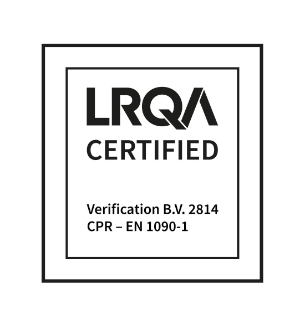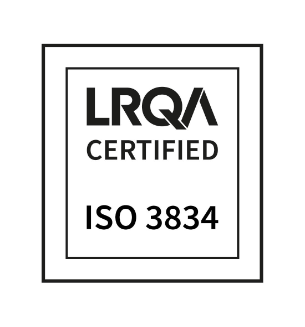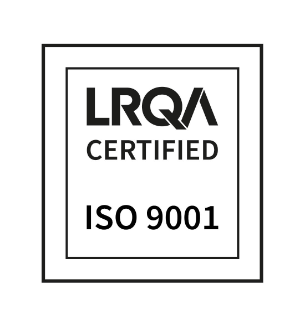Knowledge centre
4. Tabs
In order to weld two parts to each other correctly, these components have to be positioned relative to one another. Welding jigs are often used for this. However, they are fairly expensive and have to be made for each product, which takes time. Depending on how complex a product is, the related costs can quickly mount up. For one-offs and small series, the use of welding jigs is therefore often uninteresting, although we do recommend designing the construction in such a way that the parts position themselves.
Since the introduction of laser cutting, the use of tabs Fig. 4.1 and slots has become a frequently used positioning technique. Using tabs allows production to go quicker and more accurately. Quicker because there is no longer any need to measure where a component has to be placed. More accurately because measuring errors are ruled out – there are no scribers or measuring tools that let you position parts as accurately as you can with laser-cut tabs. Fig. 4.2
There is a difference between tabs that are visible and those that are not. We also differentiate between tabs that are used solely for positioning and those that are also used to strengthen the joint. The latter actually has consequences for the dimensions of the tab and the welding position. At Kepser, we prefer the use of positioning tabs.
Positioning tabs
- Use three tabs per metre for large or less stiff products.
- Do not use more tabs than necessary.
- Tolerances should preferably be absorbed across the width of the tab slot. Any play in the length of the tab is thus no longer important (see example on the next page).
- Slot width = sheet thickness + 0.2.
- Slot length = length of tab + 0.2 (if lengthwise enclosure is required).
- Make the height of the tab lower than the sheet thickness, preferably 1 mm lower. In this way, the rear of the sheet is always flat.
- In principle, the length of the tab is not important, but keep it short. Preferably 10 mm.
- It is not necessary to also weld the tab. Provide strength not with the tab but with the weld length.
- Indicate the weld position with notches in those places where welding is not required.
- Keep the depth of the notch to between 10 and 15 mm. This does away with the need to provide length-related weld markings on the drawing (see the examples on the next page).
- Take account of machining tolerances when deciding where to position tabs.
- See where the most accurate measurement has to end up for the positions of the tabs (see the examples on the next page).
- For watertight joints, it is necessary to make tabs and slots fit properly and to weld them fully closed. In any case from the rear, possibly also from both sides.
Some examples are provided below by way of clarification.
Example 1
- Tab length not important.
- Tab positioned through width of tab.
- X and Y position defined.
- Can be positioned well, despite small deviations during setting.
- Underside nice and flat. Fig. voorbeeld 1
Example 2
- One lug too many used.
- This is not suitable if there is a small deviation during setting.
- Remove the tab from one leg. Fig. voorbeeld 2
Example 3
- Tabs serve only for positioning.
- Only one tab suitable.
- Notches, other positions provided with fillet weld.
- Number of welded metres indicates the strength of the joint. Fig. voorbeeld 3
Tabs visible
- Bear in mind that visible tabs are always fully welded and then post-processed so that the tab become invisible. Tab-slot combinations for visible work are also designed to close tightly without play
- The post-processing is different for steel and stainless steel.
- Steel is welded with MIG/MAG, stainless steel with TIG or tipTIG.
- In both cases: the more welding required, the more the product starts to contract. Therefore, only use the necessary number of tabs.
- In the case of steel, make the tab height lower than the sheet thickness. Any openings that arise are easy to weld shut using the MIG/MAG welding method.
- For stainless steel, opt for a small protrusion (0.5 mm). Then little to no filler material has to be used.
- In thicker sheets (from 3 mm), make the tab the same height as the depth of the hole. The joint is welded tight with filler material.
- On a curved sheet, allow the tabs to protrude after bending. In this way, the sheet can still be positioned using the tabs. Fig. 4.3
- Keep the tab height to a maximum of two times the sheet thickness. If it is longer than this, it will need trimming.
- Use at least one sheet thickness beyond the setting line as the cutting depth.
- The sheets to be fastened usually have to be placed as close as possible to each other. You should therefore ensure that the sheet with the tabs can rest on the sheet with the slots. If necessary, also remove the internal radius from the tab. Fig. 4.4 In the case of thicker sheets (from 8 mm), a part of the slot’s radius can be cut away in the corner to make it easier to fasten the tab.
- Makes the tabs in different places if left-hand and right-hand parts are almost identical. This prevents the parts from being incorrectly placed. Fig. 4.5
- The tab joint shown below is recommended for welding corner constructions. Fig. 4.6
- Always make the tab length longer than the sheet thickness. This will produce right-angled tabs and holes, which prevents confusion during positioning.
- The use of tabs is not always possible or desirable. In this case, engraving as a way to indicate the position of the component to be joined is a possible alternative.
- This technique is also only possible on laser-cut sheet metal. Fig. 4.8

















